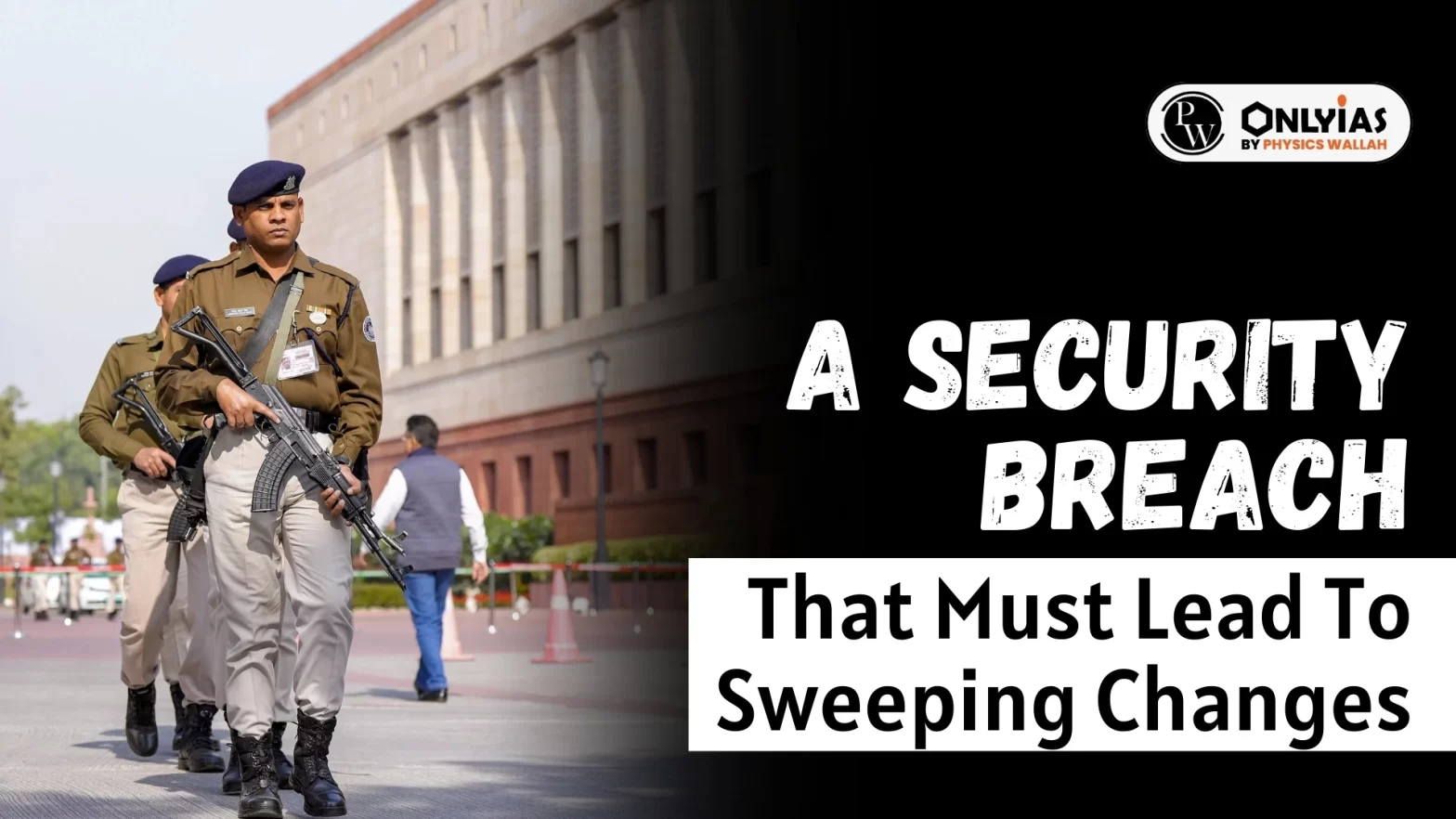Context: This article is based on an Editorial “A security breach that must lead to sweeping changes” which was published in the Hindu. A security breach was observed on December 13, when intruders entered the Lok Sabha. This security breach is raising concerns and demand for taking more serious attempts in the desired direction.
| Relevancy for Prelims: Indian Parliament and Parliamentarians, and Ministry of Home Affairs (MHA).
Relevancy for Mains: Security Challenges in India for Parliament and the Way Forward. |
Current Scenario of Parliament Security Breach
- Technology and Devices: There are spike barriers, bollards, drop gates with the latest technology, scanners, Radio Frequency Identification (RFID) devices and anti-explosive checks.
- Human-Power: The central police forces, Parliament Duty Group, and the Delhi police.
- Detecting Procedure: The door frame, metal detectors check and personal frisking (a body search for hidden items).
Arising Concerns on Parliament Security Breach
- Inadequate Technology: There is no technology and device that can check for plastic or rubber, especially when hidden in one’s shoes (as it was in this case).
- Negligence by Personnel: In the visitor’s gallery, the security personnel were not watchful enough, and the marshals failed to nab the intruders.
- Vacant Strategic Positions: Presently, the post of head of Parliament security i.e., the Joint Secretary, Security is vacant.
- The posts of the two chiefs of the Central Reserve Police Force and the Central Industrial Security Force involved with Sansad security are vacant too.
- Inquiry Committee: The inquiry into the breach has been entrusted with the Indo-Tibetan Border Police (ITBP) chief whose force is involved in the security set-up of Parliament.
- Dependency of Executives on Legislatures: The Joint Secretary, Security, is in overall operational control for the Parliament, but is fully dependent on the Ministry of Home Affairs (MHA) when it concerns the latest technology on access control or anti-explosive checks.
Steps that need to be Taken
- Advancement in Technology and Devices:
- Use of Backscatter Scanners: It can detect substances such as plastic and is being used in airports abroad.
- Use of Millimeter Wave Scanners: The United States and Europe are using millimeter wave scanners. It is a whole-body imaging device used for detecting objects concealed underneath a person’s cloth.
- Monitor and Upgradation in Technology: There is a need to engage in daily operations, monitor for improvements and latest technology to induct in respect to the security measures.
- More Secure Supervision: The Secretary, Security, in the Cabinet Secretariat who supervises the Special Protection Group (SPG) should also supervise Parliament security.
- Looking into the array of various forces guarding the Parliament, the rank of a Director General should be set up for better coordination and with full responsibility and accountability.
- Need of a Monitoring Committee: A committee comprising five MPs from across parties should be formed, which could induct specialists from outside and within the security set-up to monitor arrangements regularly.
- Coordination among MPs: MPs need to offer their complete cooperation with the enhanced security measures.
- Streamlining for the Visitor Passes: Though the MPs give an undertaking of knowing who the visitors are, however it is impossible to carry out background checks in a day or a few hours. In some cases, passes are issued in just two hours. Streamlining of this process also needs to be considered.
Conclusion:
The youngsters involved in the Parliament Security Breach incident on December 13 caused no harm, but they revealed the gaps in Parliament security for which a mere inquiry to look into the lapse and corrective measures may not be enough. It is now the correct time to make sweeping changes in the security set-up using out-of-the-box thinking and the security infrastructure needs to be constantly monitored and upgraded.
![]() 21 Dec 2023
21 Dec 2023


